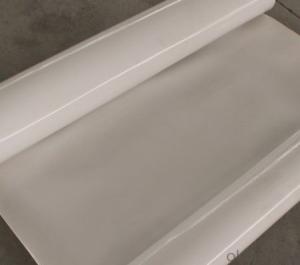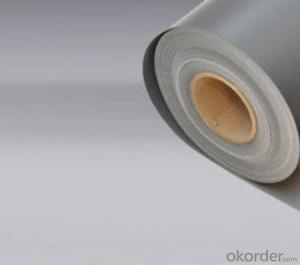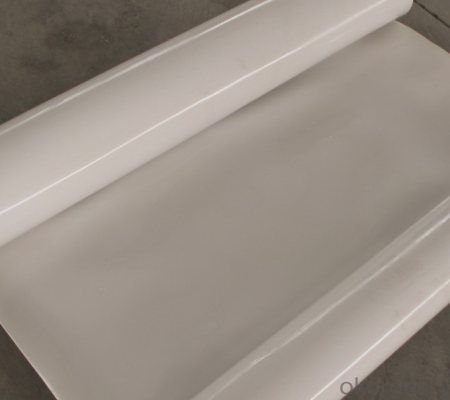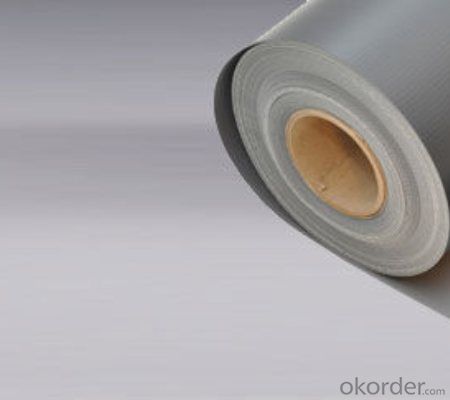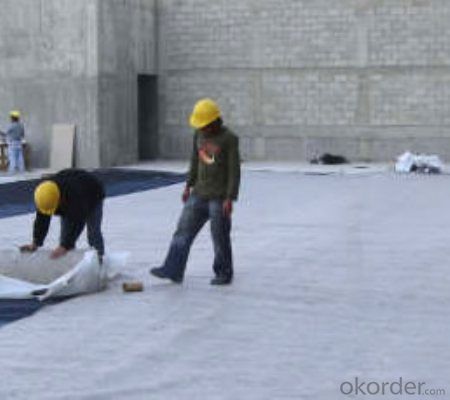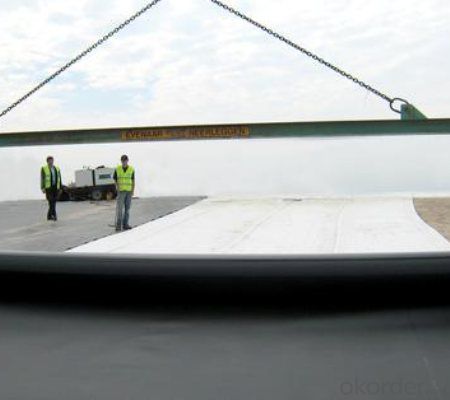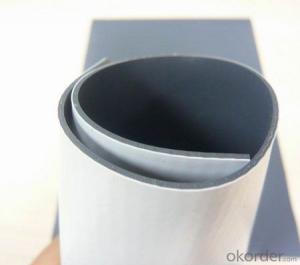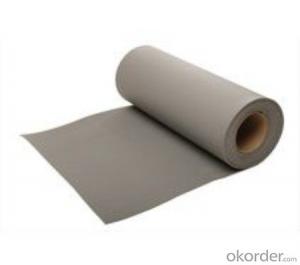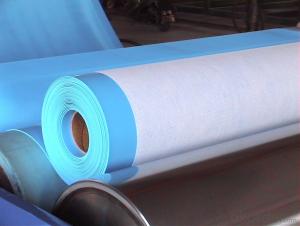TPO Membrane Smooth for Waterproof System
- Loading Port:
- Qingdao
- Payment Terms:
- TT or LC
- Min Order Qty:
- 5000 m²
- Supply Capability:
- 100000 m²/month
OKorder Service Pledge
OKorder Financial Service
You Might Also Like
TPO Membrane Smooth for Waterproof System
Description Of TPO Membrane Smooth for Waterproof System:
1. TPO Membrane Smooth is made from Thermoplastic polyethylene hydrocarbons , which is for waterproofing of exposed and non-exposed applications.
2. TPO Membrane Smooth adopts the world-advanced equipment of cold feeding extrusion and continuous vulcanization technology.
3. TPO Membrane Smooth is of high elasticity among high polymer waterproof materials and becomes a world-popular waterproofing material.
Main Features of TPO Membrane Smooth for Waterproof System:
1. Excellent physical and mechanical performance
2. High tearing resistance
3. Good deformation adaptability
4. High puncture resistance
5. High aging resistance
6. UV resistance
Specifications of TPO Membrane Smooth for Waterproof System:
Material | Thermoplastic polyethylene hydrocarbons |
Size | 1.2m (width)*20m (length) or customized, weldable type 2.05m |
Thick | 1.2mm, 1.5mm, |
Type | Smooth |
Pattern | Non-reinforced (homogeneous) |
Certificate | ISO9001/14001 |
Applications of TPO Membrane Smooth for Waterproof System:
1.Roofs, Basement
2. Industrial and civil building waterproofing
3. Geosynthetic liner for swimming pool, channels, irrigation system
IMages of TPO Membrane Smooth for Waterproof System:
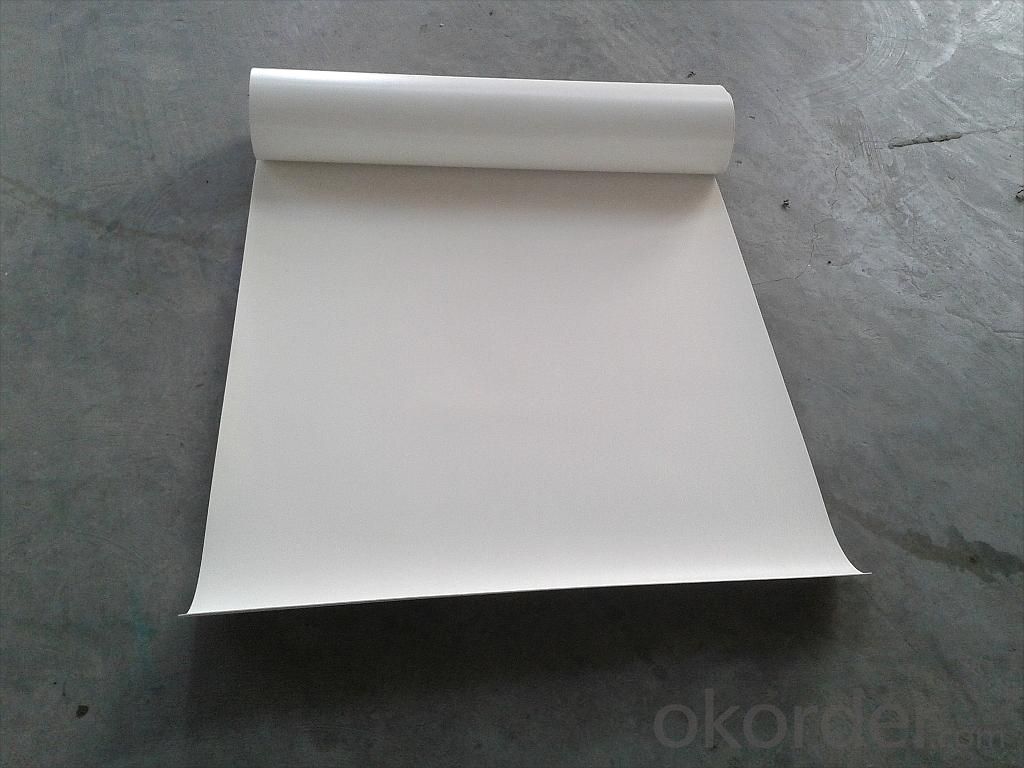
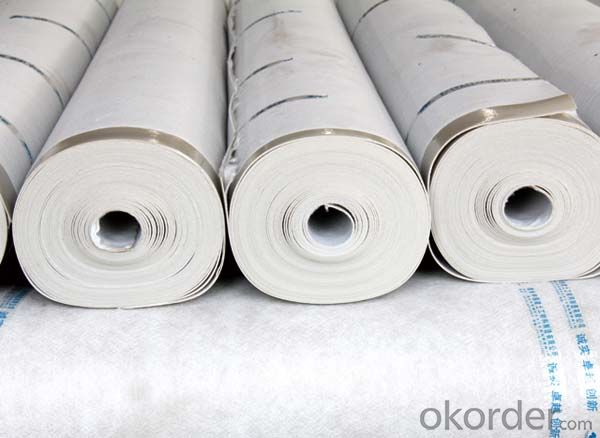
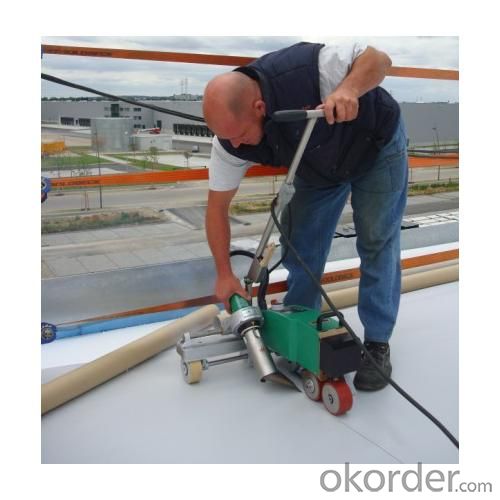
FAQ:
1. What are we supplying?
We are specialized in producing Colorful Asphalt Roof Shingle, SBS/APP modified bitumen waterproof membrane, Self adhesive bitumen waterproof membrane, PVC waterproofing membrane, EPDM rubber roofing membrane, Single Component Polyurethane Waterproof Coating, and Spray Polyurea Waterproof Coating
.
2. How Many years experience do we have?
We have been exported to more than 15 countries in the past 10 years.
3. How long do we usually reply your request?
We always reply our customer within 12 hours.
- Q: Can a waterproofing membrane be used in residential buildings?
- Yes, a waterproofing membrane can be used in residential buildings. It is commonly used in basements, bathrooms, and other areas prone to moisture to prevent water damage and leakage.
- Q: Can a waterproofing membrane be used on concrete surfaces?
- Concrete surfaces can indeed benefit from the application of a waterproofing membrane. These membranes are frequently employed to safeguard concrete constructions, such as basements, foundations, and roofs, against water-related harm. Their purpose is to establish a barrier that prevents water from infiltrating the concrete surface. By doing so, they aid in averting the accumulation of moisture, the growth of mold, and the deterioration of the concrete. Furthermore, these waterproofing membranes can furnish supplementary defense against chemicals, UV rays, and other environmental elements. To accomplish the desired waterproofing outcomes, it is crucial to ensure that the membrane is properly installed and compatible with the specific concrete surface.
- Q: Can a waterproofing membrane be used on gypsum board surfaces?
- Yes, a waterproofing membrane can be used on gypsum board surfaces. Gypsum board, also known as drywall, is a common material used in interior construction. While it is not inherently waterproof, applying a waterproofing membrane can help protect the gypsum board from moisture damage. A waterproofing membrane is a thin layer of material that is applied to the surface of the gypsum board. It forms a barrier that prevents water from seeping into the board and causing it to deteriorate or mold. It can be used in areas where moisture is present, such as bathrooms, kitchens, laundry rooms, or basements. Before applying a waterproofing membrane, it is important to prepare the gypsum board surface properly. This may involve cleaning the surface, patching any holes or cracks, and ensuring the board is dry and free of dust. Once the surface is ready, the waterproofing membrane can be applied according to the manufacturer's instructions. It is worth noting that while a waterproofing membrane can provide some protection against moisture, it is not a guarantee against water damage. It is always important to address the source of water intrusion and ensure proper drainage and ventilation in any area prone to moisture. Additionally, it is recommended to consult with a professional or follow the manufacturer's recommendations when choosing and applying a waterproofing membrane to gypsum board surfaces.
- Q: Is a waterproofing membrane breathable?
- No, a waterproofing membrane is not typically breathable. The purpose of a waterproofing membrane is to create a barrier that prevents water or moisture from penetrating through it. In order to achieve this, the membrane is designed to be impermeable to water molecules. However, this lack of permeability also means that air and moisture vapor cannot easily pass through the membrane, resulting in a lack of breathability.
- Q: Can a waterproofing membrane be used on roofs with flat surfaces?
- Roofs with flat surfaces can indeed benefit from the application of a waterproofing membrane. In fact, it is quite common to use these membranes on flat roofs to safeguard against water infiltration. The primary function of these membranes is to establish a barrier that obstructs water from seeping into the roof structure and causing harm. Typically, they are constructed using materials like modified bitumen, EPDM, or PVC, which exhibit great resistance to both water and UV rays. To install the membrane, it can be done by torch-application, adhesive adherence, or mechanical fastening. To ensure optimal effectiveness and longevity of the waterproofing membrane on a flat roof, it is crucial to guarantee proper installation and regular maintenance.
- Q: Can a waterproofing membrane be used for a retaining wall?
- Yes, a waterproofing membrane can be used for a retaining wall.
- Q: Can a waterproofing membrane be used for a parking lot?
- Yes, a waterproofing membrane can be used for a parking lot. Waterproofing membranes are commonly used in parking lots to protect the underlying structure from water damage and extend its lifespan. They provide a barrier against water penetration and can help prevent cracks, deterioration, and corrosion caused by moisture. Additionally, a waterproofing membrane can also help to minimize the formation of potholes and other surface damage.
- Q: Does a waterproofing membrane require any curing time?
- Yes, a waterproofing membrane typically requires a curing time. The curing time allows the membrane to fully bond and form a tight seal, ensuring maximum effectiveness in preventing water penetration. The specific duration of curing time may vary depending on the type of membrane and manufacturer's instructions.
- Q: Are waterproofing membranes resistant to mold and mildew?
- Waterproofing membranes exhibit resistance to mold and mildew in general. Their purpose is to establish a barrier against moisture, halting its infiltration into the structure and thwarting the growth of mold and mildew. These membranes are commonly crafted from materials like rubber, PVC, or bitumen, which do not foster the development of mold and mildew. Moreover, they are installed in a manner that guarantees effective drainage and ventilation, further diminishing the likelihood of mold and mildew formation. However, it is crucial to bear in mind that although waterproofing membranes significantly decrease the risk of mold and mildew, they are not infallible. It remains imperative to maintain adequate ventilation and promptly address any water leaks or damage to prevent the growth of mold and mildew.
- Q: Can a waterproofing membrane be used in roofs?
- Roofs can indeed benefit from the use of a waterproofing membrane. It's a widely employed technique for safeguarding roofs against water-related harm. Typically composed of robust materials like rubber or modified bitumen, this membrane is applied to the roof's surface to establish a barrier that prevents water from seeping through. As a result, leaks and potential damage are averted, as this protective layer stops water from penetrating the roof's underlying structure. Waterproofing membranes are particularly advantageous for flat or low-sloped roofs, where water accumulation is prone to causing issues. Moreover, these versatile membranes can be utilized on diverse roofing materials, including concrete, metal, and asphalt, making them suitable for various roof types. Overall, incorporating a waterproofing membrane into roofs effectively enhances their durability and longevity, while ensuring dependable protection against water infiltration.
Send your message to us
TPO Membrane Smooth for Waterproof System
- Loading Port:
- Qingdao
- Payment Terms:
- TT or LC
- Min Order Qty:
- 5000 m²
- Supply Capability:
- 100000 m²/month
OKorder Service Pledge
OKorder Financial Service
Similar products
Hot products
Hot Searches
Related keywords
